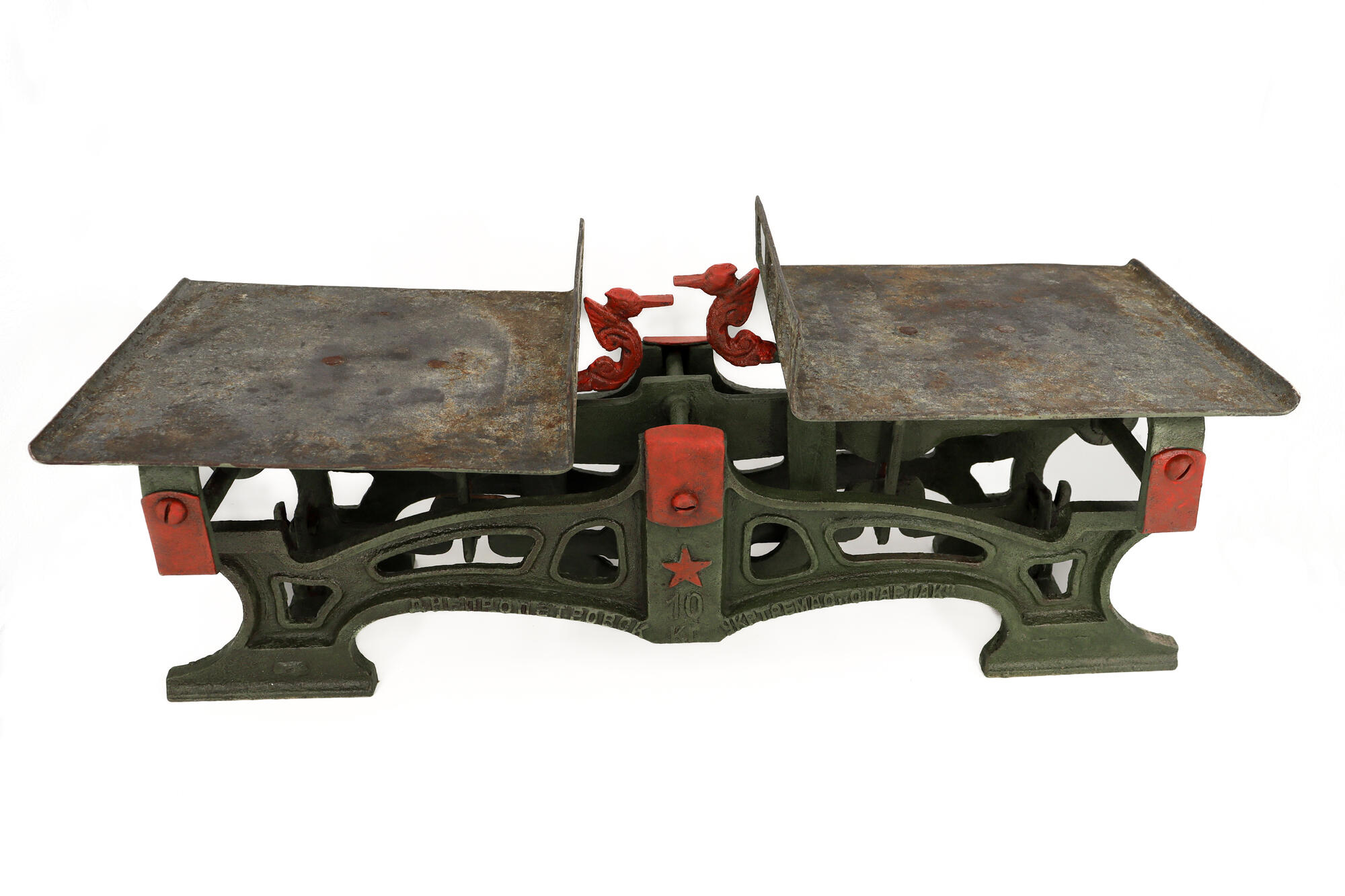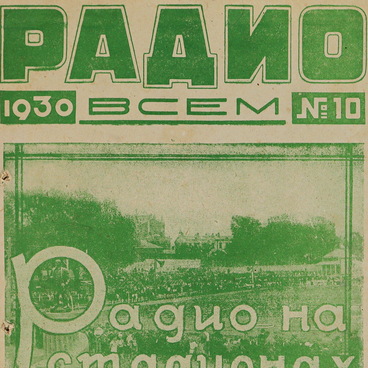A balance scale is a weight-measuring device. The model on display belongs to the table variety, which was most often used in trade for weighing food and other goods.
As a measuring instrument, scales were known back in ancient Egypt, Babylon, and Mesopotamia. The first devices of this type were based on the principle of balance. The simplest models were a straight-beam balance with arms of equal length, that had a load with an unknown mass attached to one end, while known masses were placed on the other. The scales improved over time, their mechanism changed, and new varieties were added, for example, a steelyard, which determined the mass without the use of weights.
In the mid-17th century, the French mathematician and founding member of the Paris Academy of Sciences Gilles de Roberval invented the new form of scales while trying to simplify the process of weighing. By placing a system of beams under the scale pans at the base of the device, Gilles de Roberval improved its stability and convenience.
Around 1850, the inventor Joseph Béranger proposed to improve the design of his predecessor with auxiliary levers — they replaced the uprights under the double main rocker. This innovation made it possible to reduce the external and frictional forces and also increase the sensitivity of the device. Mass production of the new model began in the first decade of the 20th century.
Before the Russian Revolution of 1917, the scales of the Béranger design were produced in Odessa and the Kingdom of Poland. Not only their original design had changed, but they were also decorated with images of dragons, griffins, lions, and mermaids. In Soviet times, the scale design had to be simplified — the mythical creatures were considered a thing of the past and were replaced by geometric shapes and basic patterns.
The scales had, apart from decorative elements, indications of the minimum and maximum load, the name or brand of the manufacturer, the serial number, and the year of production.
People called these scales “ducks” or “geese”. The name was given due to the balance indicator shaped like bird heads with beaks. When the two pans are equal in weight, the beaks will freeze right opposite each other.
For a long time, the Béranger scales could be found on the shelves of Soviet stores.
As a measuring instrument, scales were known back in ancient Egypt, Babylon, and Mesopotamia. The first devices of this type were based on the principle of balance. The simplest models were a straight-beam balance with arms of equal length, that had a load with an unknown mass attached to one end, while known masses were placed on the other. The scales improved over time, their mechanism changed, and new varieties were added, for example, a steelyard, which determined the mass without the use of weights.
In the mid-17th century, the French mathematician and founding member of the Paris Academy of Sciences Gilles de Roberval invented the new form of scales while trying to simplify the process of weighing. By placing a system of beams under the scale pans at the base of the device, Gilles de Roberval improved its stability and convenience.
Around 1850, the inventor Joseph Béranger proposed to improve the design of his predecessor with auxiliary levers — they replaced the uprights under the double main rocker. This innovation made it possible to reduce the external and frictional forces and also increase the sensitivity of the device. Mass production of the new model began in the first decade of the 20th century.
Before the Russian Revolution of 1917, the scales of the Béranger design were produced in Odessa and the Kingdom of Poland. Not only their original design had changed, but they were also decorated with images of dragons, griffins, lions, and mermaids. In Soviet times, the scale design had to be simplified — the mythical creatures were considered a thing of the past and were replaced by geometric shapes and basic patterns.
The scales had, apart from decorative elements, indications of the minimum and maximum load, the name or brand of the manufacturer, the serial number, and the year of production.
People called these scales “ducks” or “geese”. The name was given due to the balance indicator shaped like bird heads with beaks. When the two pans are equal in weight, the beaks will freeze right opposite each other.
For a long time, the Béranger scales could be found on the shelves of Soviet stores.



